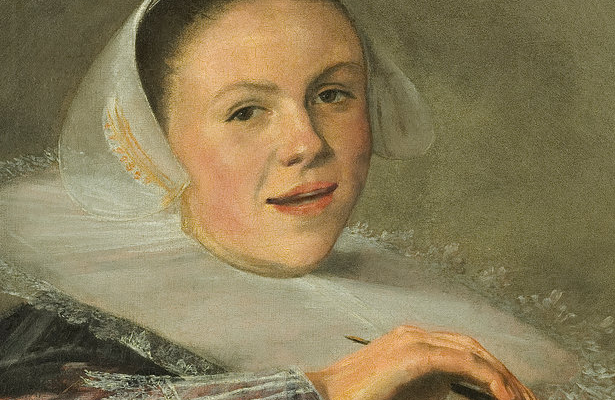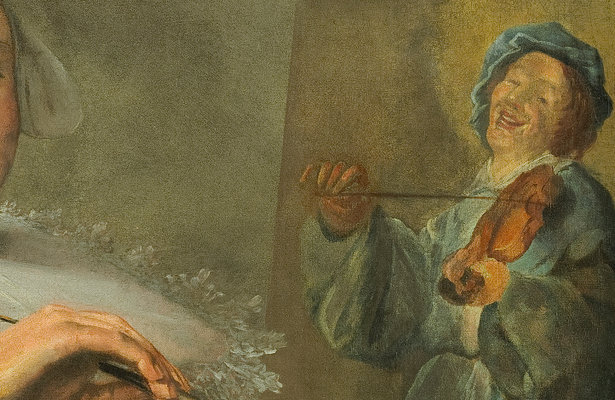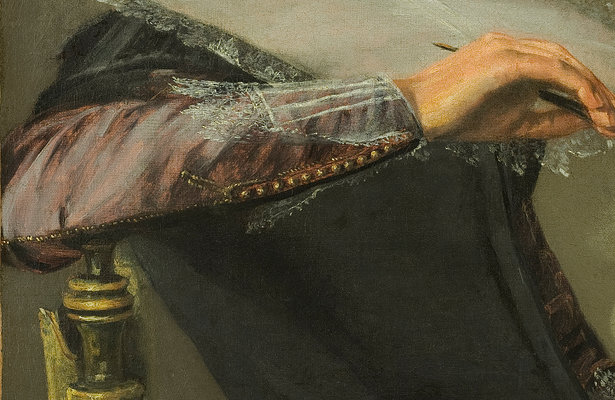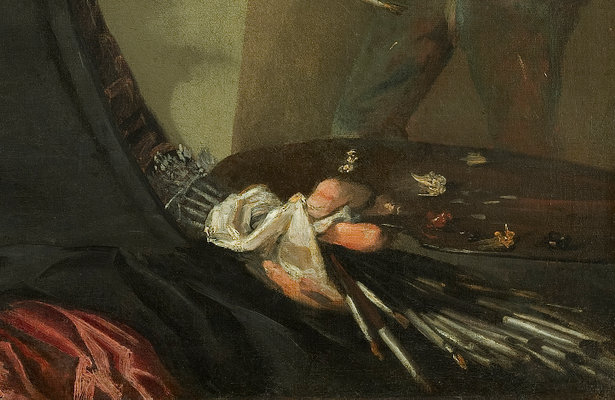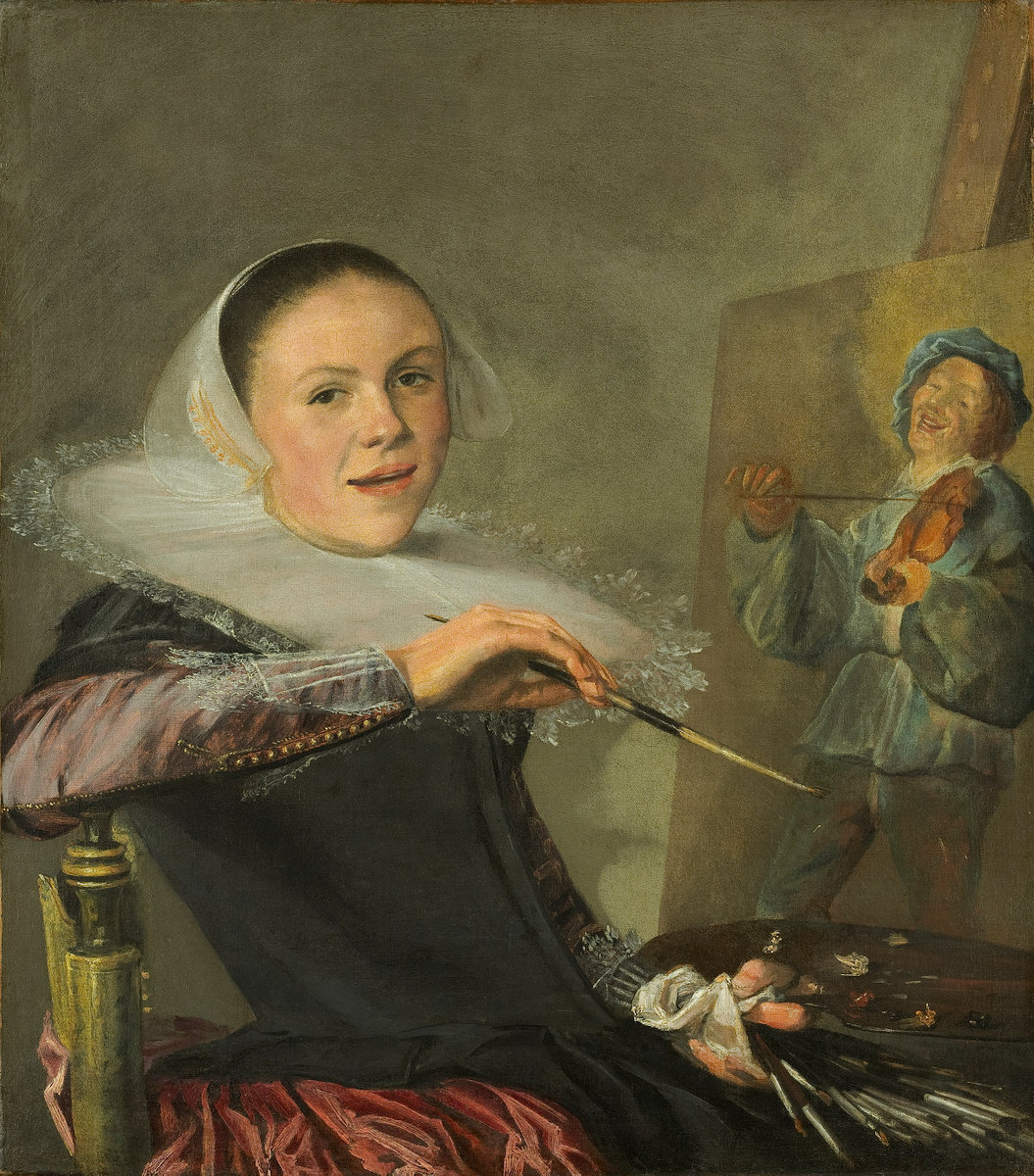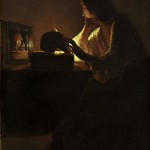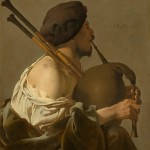Judith Leyster’s Self–Portrait exudes pride and self–confidence, and it has become one of the National Gallery of Art’s most popular Dutch paintings. Leyster has depicted herself at her easel, briefly interrupting her work on a painting of a violin player in order to interact with the viewer. The momentary quality of the portrait and the vigorous brushwork echo the work of Frans Hals, Haarlem’s most celebrated portrait painter and Leyster’s colleague. By juxtaposing her hand holding a brush with the hand and bow of the violin player, Leyster cleverly compares the art of creating harmonious music with the art of creating paintings. She holds the tools of her trade—a palette, a cloth, and no fewer than 18 brushes. In reality she would not have worn the elegant dress and lace–trimmed collar while at work in her studio.
Leyster was accepted into the professional artists’ guild of Saint Luke’s Guild of Haarlem as an independent master in 1633, a rarity for a female artist at the time. As such, Leyster was entitled to establish her own workshop and take paying students. Early chroniclers of Haarlem praised her proficiency and talent. She was celebrated as “the true leading star” in art, a clever allusion to her family name, which means “lodestar.” Leyster incorporated a star in her professional signature, the monogram JL*. Following her marriage in 1636 to fellow Haarlem artist Jan Miense Molenaer, Leyster stopped producing art in her own name but probably continued to paint in collaboration with her husband.







